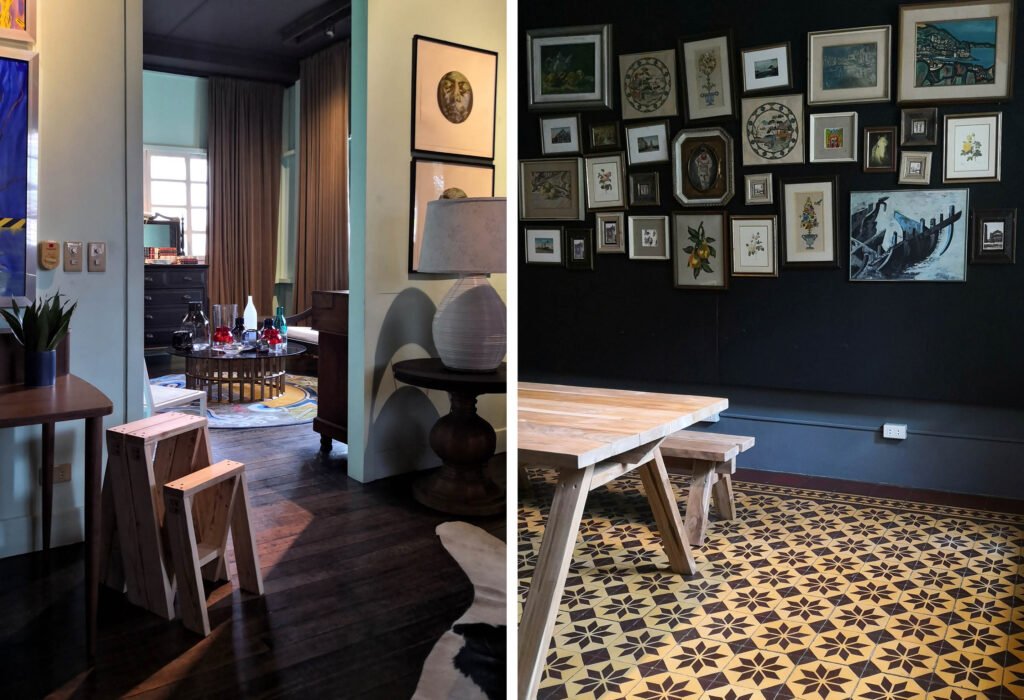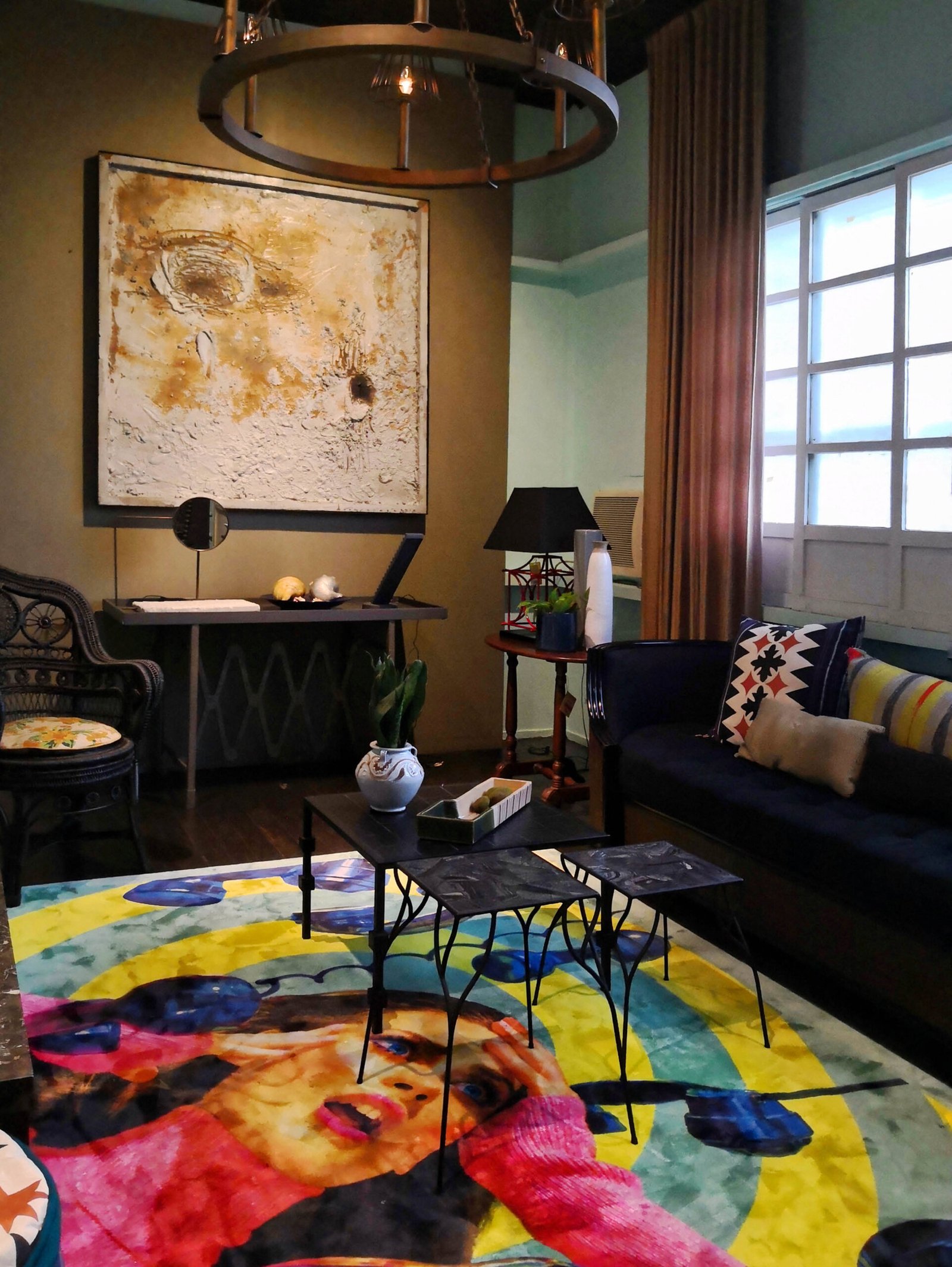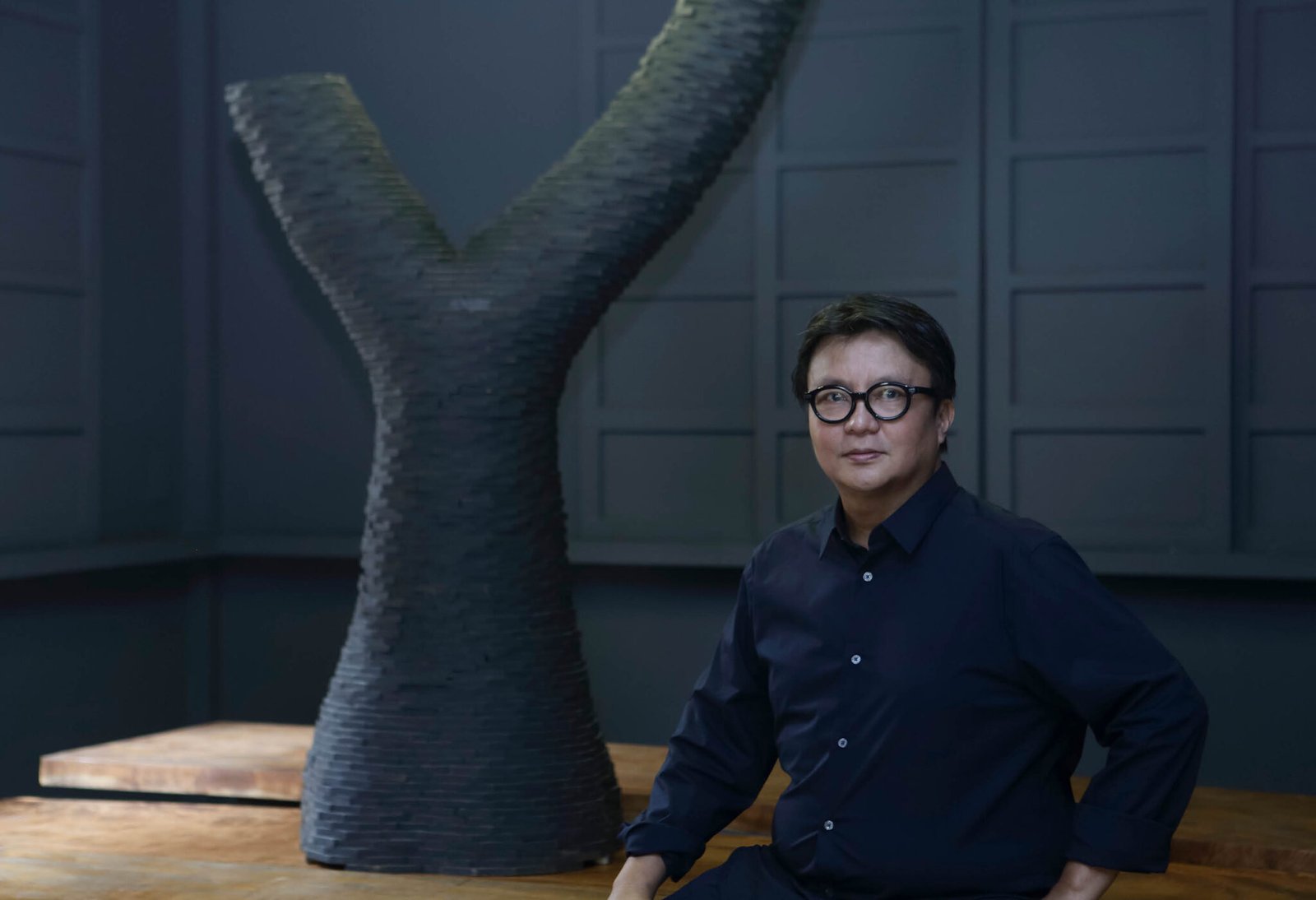Interview and Images Patrick Kasingsing
Can you tell us about Artelano 11 and its beginnings?
Fourteen years ago, I came into a 15-house compound in Pasay that was being rented out as residences to expats, creatives and businessmen. I saw a vacant house that was numbered a-11.It was love at first sight. The thought of converting the house into a design and lifestyle gallery—inspired by quaint and chic shops I saw on a memorable Paris trip—popped up. When I moved in, I decided to turn it into an atelier, residence and showroom that we now know sa Artelano 11.
Our name is a combination of the house number and the Tarlacqueño word for “skilled worker”, artelano. I was born and raised in Tarlac, and I used to hear that word from my mother whenever she would hire a carpenter to do improvements in our house.
What encouraged you to repurpose these aging properties into a mixed-use space for furniture, interior design, and events?
I have a love affair with the houses. In order to maintain and preserve them, I needed to put up a business. It was also great timing that the “hipster culture” had become popular [when we started]. People were on the lookout for wonderful retail experiences and obscure spaces. I relied on word-of-mouth reviews in promoting the place.
The space is a dream come true for me. When I was in college, I used to visit a friend who lives in a posh Art Deco-style family house along Taft Avenue, which sadly was demolished a few years ago. I had been daydreaming of living in that old house in Pasay.
What about the process of putting together Artelano 11 did you find enjoyable and memorable?
Friends tipped that putting up a furniture and design showroom in an obscure place was not a good idea, that I should have invested somewhere else. But I was very optimistic then with the belief that people will come, as it was in that pivotal scene in the movie Field of Dreams.


How is Artelano 11 reflective of your aesthetic as an interior and furniture designer?
I am fond of different period styles, especially the Art Deco and Bauhaus periods. I also have vivid childhood memories of being curious and fascinated by those midcentury-style houses in my hometown of Tarlac.
Being an interior designer, aside from addressing the functional requirements, I also need to tackle different design typologies in coming up with unique solutions for each project.
What do you find beautiful?
My first Paris visit was life-changing. I have become a modernist in love with the old world. I came to a greater appreciation of the classics, culture, historical, and heritage values, and realized that the only way to preserve these is to keep them relevant.
I am also awed by the timeless designs of objects and the stories behind how they were made. I love things that are not perfect and knowing how they are able to withstand time. It’s my wabi-sabi way of looking at things.
Tell us about your process as a designer for both interiors and furniture. Do you depend on an ordered sequence of steps, or do you allow spontaneity to dictate your output?
I’m on my creative high in the mornings, with lots of random thoughts and ideas.
It takes time for me to conceptualize and finalize a design. I do initial sketches. Production and functional requirements are to be considered, too. It’s the old-school way of producing. After discussing concept sketches with my team, they will produce the necessary drawings that are needed to produce the prototype. Then, we do all the necessary adjustments for the first run of the final product.
Having dabbled in both interiors and furniture design, what design insights have you arrived at concerning the livability of today’s homes and the spatial needs of its inhabitants?
People will have to contend with living in compact volumes of dwellings in congested, urban cities. Around 50 cubic meters of space, from the dimensions of an urban dwelling of 7 meters by 3 meters by 2.4 meters height. It is already happening in Manila. In spite of how compact the living space, the homeowner is conscious about how to make it picture-pretty and worthy of being on social media.


I am also awed by the timeless designs of objects and the stories behind how they were made. I love things that are not perfect and knowing how they are able to withstand time. It’s my wabi-sabi way of looking at things.


We live in a world that is one global village. One’s living space can be multicultural in its spatial and design requirements and also the aesthetics. Many things that people buy now and that you see are products of global consumerism and fast retail. There is always a demand for unique and well-crafted objects.
Was Artelano 11 created with a target audience in mind? If so, how did this shape its eventual form, and how it is being run as a mixed-use space?
My objective in opening a-11 was to make it like an experiential walk-thru portfolio of my furniture line, design capabilities, and branding ideas. We still rely on it a lot, in doing projects for clients and the design community.
The retail component and having a mixed-used space are add-ons to the experience, and they expand the story of the a-11 brand.
People who come and visit are the ones in the know: tastemakers, creatives, designers, architects, travel bugs, cool hunters. We never do straightforward advertising. We had the good luck of being supported by a lot of noted editors, writers, and publications.
A Filipino spirit pervades your pieces and spaces without having to resort to tokenism and pastiche. How has the Filipino space of yore evolved? How would you describe Filipino spaces now, and what past interior practices before do you think our spatial design practitioners today should implement more?
Their old world and colonial charm are inherent to the houses. They were gifted with an amazing volume and proportion of the rooms and integrated by a very smooth efficient original floor plan. Another original feature is the baldosa cement floor tiles that were handcrafted with unique patterns and color pigments that never fade.
When we did the interiors, we were very conscious that the feel of the old structure would not be erased or concealed. We even enhanced some imperfections.
More important now is how we should find ways in making use of old and heritage structures as much as possible. It is a challenge to the architects, builders, and owners.
Demolishing an old building for the purpose of greater financial gain is the worst thing one can do. We have a duty to respect and preserve our history, culture, and tradition. This is one way we can keep our spaces Filipino. •


An eclectic wonderland awaits at @artelano11 and artelano11.ph
The story first appeared in the Craft issue


One Response